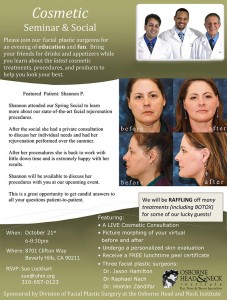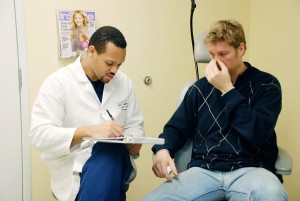- Hereditary Hemorrhagic Telangiectasia - May 25, 2016
- Hereditary Hemorrhagic Telangiectasia: Septal Perforation and Nose Bleeds - May 23, 2016
- Hereditary Hemorrhagic Telangiectasia: Epistaxis and Septal Perforation - May 18, 2016
- Wegener’s Granulomatosis: Autoimmune Disease and Multi-Focal Septal Perforation - May 9, 2016
- Kyle Korver: Facial Injury and Nasal Fracture - March 24, 2015
- Russell Westbrook: Facial Injury and Surgery - March 5, 2015
- Mega-perforation: Pushing the Limits of Septal Perforation Repair - November 26, 2014
- Septoplasty Complication and Septal Perforation - November 24, 2014
- Nose Picking (Rhinotillexis) and Septal Perforations: Why I should stop picking my nose…? - November 24, 2014
- Nasal Fractures, Septal Hematoma, and Septal Perforation: Simultaneous Rhinoplasty and Septal Perforation Repair - October 1, 2014
Quick Facts:
i. Cocaine constricts blood flow to the septum causing a perforation
ii. Early intervention can prevent a septal perforation
iii. A septal perforation will never heal on its own once present
iv. Cocaine can severely damage the appearance and function of the nose
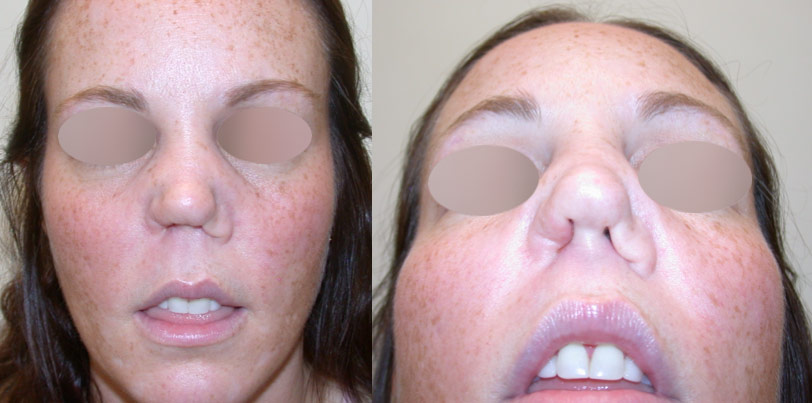
Why is Cocaine Harmful to the Nose?
One of the most significant long-term effects of cocaine use is damage to the nose. A septal perforation, or a “hole in the septum” is a condition that is commonly caused from snorting or “sniffing” cocaine through the nose.
The nose has a fragile blood supply, which is shut off by cocaine use. This process is called vasoconstriction (closing off of blood vessels). When the blood vessels constrict, the blood supply is compromised, delivering less oxygen to the tissues of the septum. With low oxygen, the septum lining begins to die. Once the lining dies, it can no longer support the cartilage underneath it and the cartilage dies. This is called a septal perforation (hole in the septum). Once the septum is perforated, the nose can collapse because the septum is the structural support of the nose.
Typically, the cocaine user will have early signs that a septal perforation may be imminent but may be unaware of the immediate danger, because, early signs often mimic other benign nasal conditions such as; simple nosebleeds, nasal congestion, increase in nasal discharge (rhinorrhea), sinus infection, and common allergy symptoms. Although many cocaine users are clearly aware when they have a “full-blown” septal perforation, many miss the window of opportunity to reverse early damage before it leads to a septal perforation. A surgeon who specializes in septal perforations is the only specialist who can diagnose an imminent septal perforation and help to prevent its occurrence. Once a septal perforation is present it will never heal on its own.
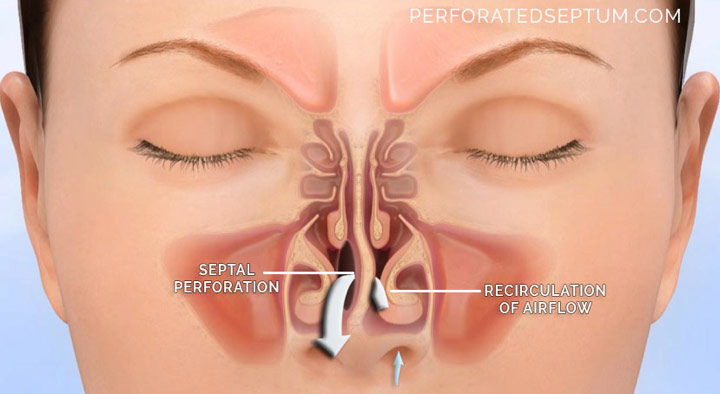
What nasal injuries does cocaine cause?
Damage to the nose from cocaine can cause:
- Epistaxis (nosebleeds)
- Chronic Infections
- Perforated Septum (hole in the nasal septum)
- Nasal Collapse
- Foul Smells
- Anosmia (Loss of Smell)
- Nasal Deformity
- Allergy Exacerbation
- Nasal Obstruction
- Nose Whistling
- Snoring
- Social Isolation
- Poor work performance from chronic nasal infection (missed days)
- Low self-esteem
- Anxiety
Why do these injuries occur?
Lack of oxygen will also injure the lining, so that it is more prone to infection. When the lining is damaged, it will break down, causing nosebleeds.
The most important thing in the treatment of nasal injuries is stopping the use of cocaine. This allows the blood vessels to recover, which will allow the lining to recover. However, once a septal perforation occurs, stopping cocaine alone will not make it resolve. The hole in the septum will be prone to infection and will naturally get bigger over time. This can affect the appearance of the nose, producing what is called a “saddle nose.” The voice may also be affected, with audible whistling through the perforation and an altered nasal resonance.

Can these injuries be treated?
Septal Perforations can be diagnosed, treated, and reversed only by a highly qualified septal perforation specialist. If the patient is seen early in the process an imminent septal perforation can also be reversed without the need for surgery. In the hands of a septal perforation specialist, the success rates of surgical repair are very good, however, with non-specialist nasal and plastic surgeons the success rates are very low.
How do I know if I’m seeing a qualified specialist?
A qualified septal perforation specialist:
- Manages several patients a week with septal perforations
- Performs surgery weekly for septal perforations
- Can successfully manage adults and children with septal perforations resulting from a variety of causes (i.e. prior septoplasty, rhinoplasty, nose picking, trauma, decongestant abuse, caustic injury, illicit drug use, autoimmune disease, etc.)
- Has a septal perforation team experienced in coordinating care of the patient including septal perforation specialist, allergy and rhinology, pediatric ear nose and throat, head and neck/microvascular surgery, and anesthesia services
- Has a success rate in the high 90th percentile for large and small perforations
- Has many patients/families that can attest to the competency of the physician and can speak with you about their personal experience with the physician and the success of their surgery
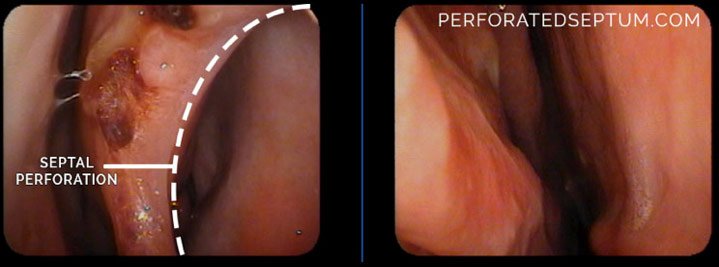
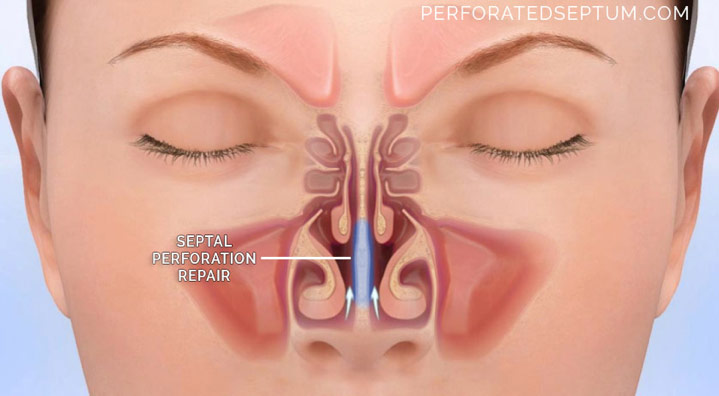
To learn more about Dr. Jason Hamilton or septal perforation prevention or treatment, please visit www.perforatedseptum.com.

